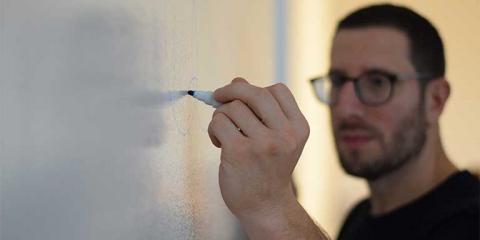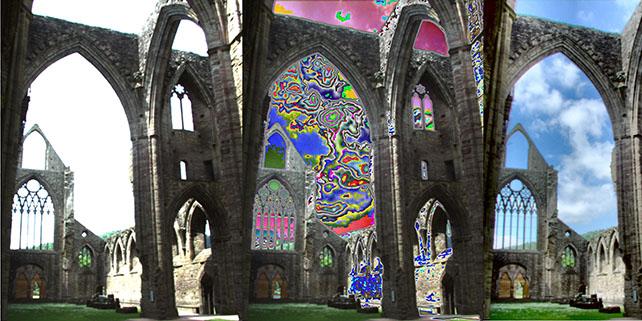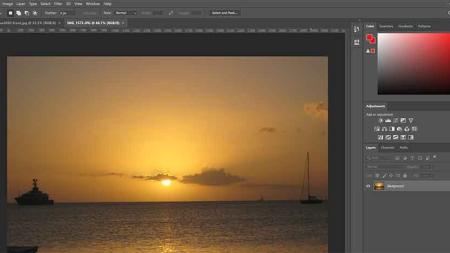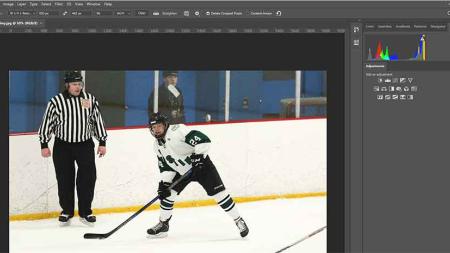
Related Class
Innovations in Photography continue in Boston
- Published on

Just across the Charles River from Boston is the birthplace of modern instant photography, and recent inventions from MIT researchers are advancing digital photography in ways that will reduce the need for Photoshop work to correct under-exposed and over-exposed images.
A team of researchers at the MIT media lab in Cambridge, just across the river from Boston, have been developing the next generation of digital photography hardware and software to create images that will look better right off the camera, with minimal need for retouching.
Early examples of concepts from the team include the ability to accurately capture an image of the sky, a white building, and a shiny vehicle. Rather than these images being washed-out, a combination of new sensors and algorithms will accurately capture these difficult to photograph scenes.
An example provided by MIT shows an image of the ruins from an old church. In the image, capturing dark shadows of the stone along the blinding white of the sky is next to impossible with a conventional camera. The sky is blown out and white with no detail and the dark shadows of the brick also lack detail. While an exceptional Photoshop artist could isolate each of these areas and use level and curves to recover some of the image, it is unlikely to ever fully reflect an accurate representation of the original.
The new approach is able to capture the sky, clouds, and dark shadows, then decode this to retain the original depth of both light and dark areas. While HDR, or high dynamic range, can be used currently to combine multiple images taken over several exposures, the new approach will use a single exposure combined with new software. Because it is a single exposure, there is no need to bring images into Photoshop to merge them, or worry about changes that occurred between the different images that are needed to be combined together in HDR.
The new hardware will use digital sensors that effectively capture an unlimited amount of data, so they are never saturated. Once a sensor reaches a point of saturation, it resets and continues to collect new data until the lens closes. Current sensors simply reach a point of saturation, and record bright areas as white. The camera they are developing is called a “modulo” camera, in reference to modular principles, such as a sign wave.
This technology doesn’t exist in current cameras, and the team at MIT needed to create a prototype camera in their lab to capture images, along with developing the software as well. This puts the technology years away from showing up in a smartphone or DSLR camera. But as cameras and sensors appear in more devices, including automated, self-driving cars, the implications for this technology extend far beyond a traditional camera. For the time being, you may still need to learn Photoshop to create traditional HDR images or retouch under exposed and over exposed photos.
The idea behind the camera was described publically in a presentation by the MIT researchers at the International Conference on Computational Photography. A few miles down the road from where Edwin Land developed the first Polaroid cameras, and separated by a few decades, Boston continues to be a home for photographic innovation.
About the author
Jennifer Smith is a user experience designer, educator and author based in Boston. She has worked in the field of user experience design for more than 15 years.She has designed websites, ecommerce sites, apps, and embedded systems. Jennifer designs solutions for mobile, desktop, and iOT devices.
Jennifer delivers UX training and UX consulting for large Fortune 100 companies, small start-ups, and independent software vendors.She has served as a Designer in Residence at Microsoft, assisting third-party app developers to improve their design solutions and create successful user experiences. She has been hired by Adobe and Microsoft to deliver training workshops to their staff, and has traveled to Asia, Europe, India, the Middle East, and across the U.S. to deliver courses and assist on UX design projects. She has extensive knowledge of modern UX Design, and worked closely with major tech companies to create educational material and deliver UX workshops to key partners globally. Jennifer works with a wide range of prototyping tools including XD, Sketch, Balsamiq, Fireworks, Photoshop, Illustrator, and Blend for Visual Studio. She also works extensively in the fields of presentation design and visual design.
Jennifer is also an expert on Photoshop, digital image editing, and photo manipulation. Having written 10 books on Photoshop, and having consulted and provided training to major media companies and businesses around the globe.
Jennifer is the author of more than 20 books on design tools and processes, including Adobe Creative Cloud for Dummies, Adobe Creative Cloud Digital Classroom, and Photoshop Digital Classroom. She has been awarded a Microsoft MVP three times for her work with user experience design in creating apps for touch, desktop, and mobile devices. Jennifer holds the CPUX-F certification from the User Experience Qualification Board and assists others in attaining this designation in leading a UX certification course at American Graphics Institute. She is a candidate for a Master’s degree in Human Factors in Information Design.


